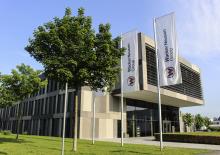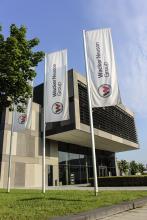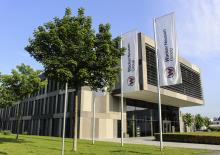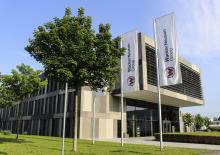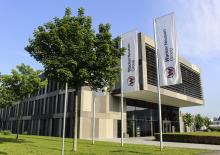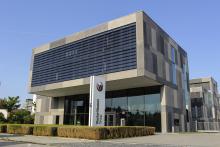The pandemic is having an impact on Wacker Neuson’s results.
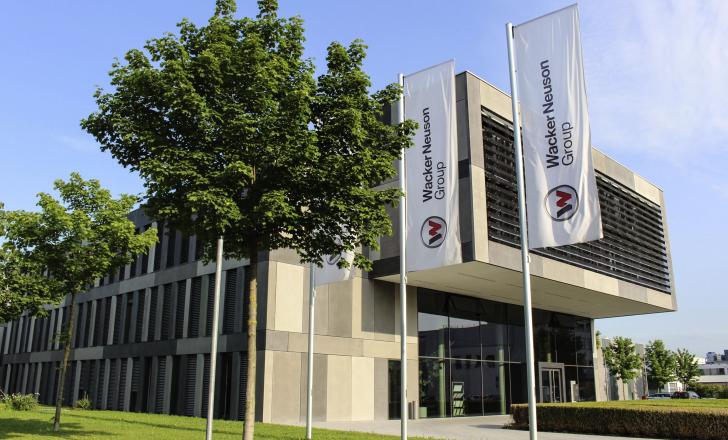
Wacker Neuson remains positive despite the tough conditions due to the global pandemic
The COVID-19 pandemic continues to have a significant impact on the financial results for Wacker Neuson in the third quarter of 2020. The firm says that revenue for the third quarter of 2020 is €390.8 million, 16.5% below that of the €468.2 million for 2019, while the EBIT margin has dropped by 3% to 5.8%. Revenue for the first nine months of the year amounted to €1.187.5 billion, a drop of 16.4% from the €1.4208 billion for the first nine months of 2019.
“We again experienced a significant decline in revenue in the third quarter related to the coronavirus pandemic, albeit less pronounced than in the second quarter. However, we are also seeing positive changes in our industry that have been triggered or accelerated by the shift in circumstances. Through the crisis, our customers have become much more open to the possibilities of digitalisation and electromobility in particular,” explained Martin Lehner, CEO of the Wacker Neuson Group.
The third quarter revenue in Europe, the largest region for the Wacker Neuson Group, dropped 8.2% to €310 million compared with the €337.6 million achieved in 2019. Once again, the DACH-region (Germany, Austria and Switzerland) had a stabilising effect, with revenue from the Wacker Neuson brand remaining at the same level as the previous year. Revenue generated by selling rental equipment from the group’s own fleet increased. Whereas many countries outside of Central Europe reported double-digit downturns in revenue, the UK improved its performance markedly. This was primarily fueled by continued strong demand for dumpers, which more than compensated for the restrained investment behavior among major rental chains. Revenue generated by the Group’s Weidemann- and Kramer-branded equipment declined by a total of 12.2% to €63.9 million, compared with €72.8 million in 2019.
Revenue in the Americas, which continues to be hit hard by the Covid-19 pandemic, decreased 43.1% in the third quarter to €65.9 million, compared with €115.9 million in 2019. Adjusted for currency effects, this corresponds to a drop of 38.8%. Willingness to invest remained extremely low among dealers, key accounts and rental chains in the region. Although the US production plant had remained largely closed since April, the first production lines started to gradually ramp up towards the end of the third quarter.
In the third quarter, Wacker Neuson experienced slight growth in the Asia-Pacific region for the first time since the start of the year. The group reported a significant double-digit revenue upturn in China as well as gains in Australia despite the challenging conditions there. In contrast, revenue in Southeast Asia halved due to the severe impact of the coronavirus crisis. Revenue for Asia-Pacific as a whole amounted to €14.9 million in the third quarter, compared with €14.7 million in 2019.
Profit before interest and tax (EBIT) for the third quarter amounted to €22.8 million, compared with €41.2 million in 2019. The EBIT margin settled at 5.8% compared with 8.8% in 2019. Profit was primarily impacted by the sharp downturn in sales volumes, which, in conjunction with the further reduction of inventory, resulted in much lower capacity utilisation at production plants than in the previous year. Bad debt allowances in the amount of €7.5 million also had a negative impact. In contrast, the group benefited from a lower cost base relative to the previous year as well as from growth in the services segment, which had a positive impact. The group continued to use various short-time work models in the third quarter, albeit to a lesser extent than in the second quarter.
Viewed over the first nine months of the year, EBIT amounted to €73.2 million, which corresponds to a margin of 6.2%, compared with €127.4 million and 9% for 2019. This includes a goodwill impairment of around €9 million attributed to the US subgroup, which was reported in the second quarter.
The Wacker Neuson Group continued to reduce net working capital in the third quarter. Inventory downsizing had the biggest impact here as the Group was able to further reduce levels despite the decline in sales volumes. Inventory was already below the year-end goal of €500 million by September 30th at €475.8 million. Net working capital amounted to €636.3 million. This is a reduction of 14.4% relative to the close of the second quarter of 2020 and 29.2% relative to the prior-year period.
Free cash flow for the third quarter amounted to €86.5 million. In the previous year, a sharp rise in net working capital resulted in negative free cash flow both for the third quarter and for the nine-month period. Free cash flow for the first nine months of 2020 amounted to €179.4 million. As a result, net financial debt declined markedly again, amounting to €276.1 million at the close of the third quarter. Gearing was reported at 22.2%, compared with 42.2% in 2019.
Infection rates are on the rise again, leading to a tightening of government restrictions. As it is impossible to reliably predict the effects that these measures will have on public life, general economic activity and the business development of the Wacker Neuson Group, it is currently not possible to quantify the outlook published in August. According to that outlook, the Executive Board expects revenue and the EBIT margin for the full year 2020 to be considerably lower than the previous year.
Investments for the year as a whole are expected to remain unchanged at around €80 million. The group expects to achieve Strategy 2022 goals one to two years later than planned. “We have worked hard on consistently implementing our Strategy 2022 in recent years to ensure that our Group is focused 100 percent on our customers’ needs. We have already made substantial progress in each of the initiative’s three strategic areas of “focus”, “acceleration” and “excellence”, and are today much more efficient, innovative and – above all – closer to our customers than we were at the start of 2018,” added Lehner. “Together with our colleagues, we will remain committed to our current path. The long-term trend towards compact equipment in the construction and agricultural sectors is unchanged and offers major opportunities for our Group. Eco-friendly solutions and alternative drives are becoming increasingly important to our customers. As an innovation driver, we believe that we are ideally positioned to actively shape the key trends in our industries and create long-term value for our customers as well as our shareholders,” continues Lehner. “The goals that we set out for the Group in 2018 remain our benchmark. Based on the information currently available, however, we no longer expect to achieve all of these by fiscal 2022.”

